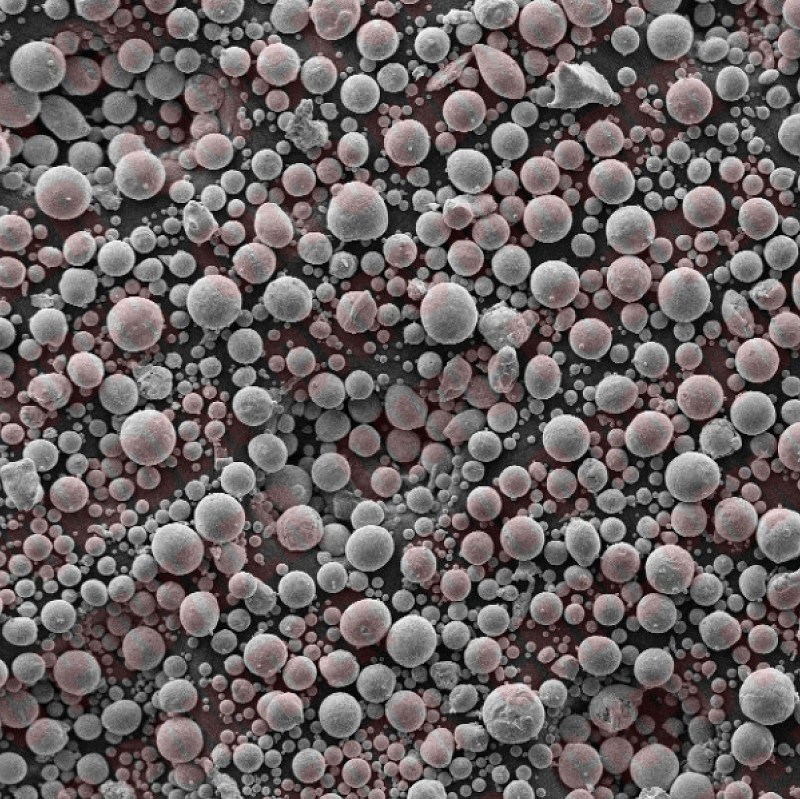CuCrNb Powder (GRCop-42 and GRCop-84)
CuCrNb is a copper-based alloy with chromium and niobium added to enhance its mechanical properties. CuCrNb alloys usually refer to the Glenn Research Copper (GRCop) alloys, which are developed by NASA Glenn Research Center. There are mainly two kinds of CuCrNb powders named GRCop-42 and GRCop-84, with different compositions of Cr and Nb. They are usually manufactured via Laser powder bed fusion (L-PBF) and electron beam powder bed fusion (EB-PBF).
Princeton Powder is a leading supplier of high-purity CuCrNb powders. We provide 15-53 um, 45-105 um, and customized particle sizes per requested. Copper powders including Copper Nickel Alloy CuNi Powder, Aluminium Bronze CuAl10 Alloy Powder, and CuCrZr powder C-18150 are for sale at a competitive price.
Formula | CuCrNb |
Part Number | CU1120 |
Purity | 99% min |
Synonyms | CuCrNb Powder, GRCop-42 and GRCop-84 Powder |
Particle Sizes | 15-53 um, 15-45 um, Customized |
Shape | Spherical or irregular |
Oxygen | <0.2% |
Density | 8.79 g/cm 3 |
Description of CuCrNb Powder (15-53 um)
CuCrNb is a copper-based alloy with chromium and niobium added to enhance its mechanical properties, high-temperature oxidation resistance, and electrical conductivity. This alloy exhibits excellent wear resistance and thermal stability, making it widely used in aerospace, electronic components, and high-performance industrial parts manufacturing.
Manufacturing method of CuCrNb Powder(powder bed fusion)
- Raw Material Preparation: High-purity copper, chromium, and niobium are used as raw materials.
- Melting and Alloying: Raw materials are melted under high vacuum or inert gas protection using arc melting
- Atomization for Powder Production: CuCrNb powder is produced using gas atomization, powder bed fusion, or plasma rotating electrode process (PREP)
- Post-Treatment: Powders undergo degassing and surface cleaning to reduce oxygen content.
Main properties of CuCrNb Powder
- High Electrical Conductivity: CuCrNb powder is siutable for electrical contacts and high-thermal-conductivity applications.
- High Strength and Creep Resistance: Chromium and niobium additions significantly improve mechanical properties, enabling use in high-temperature, high-stress conditions.
- Corrosion and Oxidation Resistance: Resistance to oxidation and corrosion, even in high-temperature environments.
- Good Formability: CuCrNb powder is used for 3D printing, isostatic pressing, and hot isostatic pressing (HIP) manufacturing techniques.
Chemical Composition/Particle Size of CuCrNb Powder
Application of CuCrNb Powder
- Additive Manufacturing (3D Printing)
CuCrNb powder’s excellent flowability and uniform particle size distribution make it ideal for laser melting and electron beam melting technologies, producing components with complex geometries. - Hot Isostatic Pressing (HIP)
CuCrNb powder is used in HIP processes to create dense parts for critical applications in high-temperature environments, such as jet engine components or heat sinks. - Surface Coatings
CuCrNb alloy powder can be used in plasma spraying to form high-conductivity, wear-resistant coatings for electronic contacts or industrial molds.
CuCrNb Powder Scholar Articles
The current state of CuCrZr and CuCrNb alloys manufactured by additive manufacturing: A review
Abstract: Additive manufacturing (AM) has gained attention in recent decades. Due to excellent mechanical and thermal properties, pure copper and its alloys are widely in nuclear and aerospace industries. CuCrZr and CuCrNb are precipitation hardenable alloys. The present work provides a comprehensive overview of current research works on CuCrZr and CuCrNb alloys built by various AM processes (especially laser powder bed fusion, L-PBF). Due to high reflectivity for near infrared laser and high thermal conductivity, it is still challenging to build copper alloys by conventional L-PBF process. Therefore, three approaches to enhance the absorptivity of the alloys have been discussed. The microstructure, including texture and precipitates have been discussed. The mechanical, electrical and thermal properties at room temperature and high temperature, anisotropic properties, and post-heat-treatments have been discussed in the review. In addition, the outlook of the AM-ed CuCrZr and CuCrNb alloys has been highlighted.

